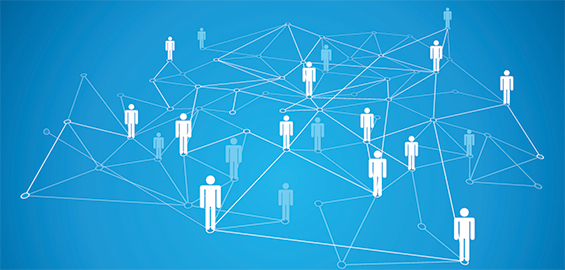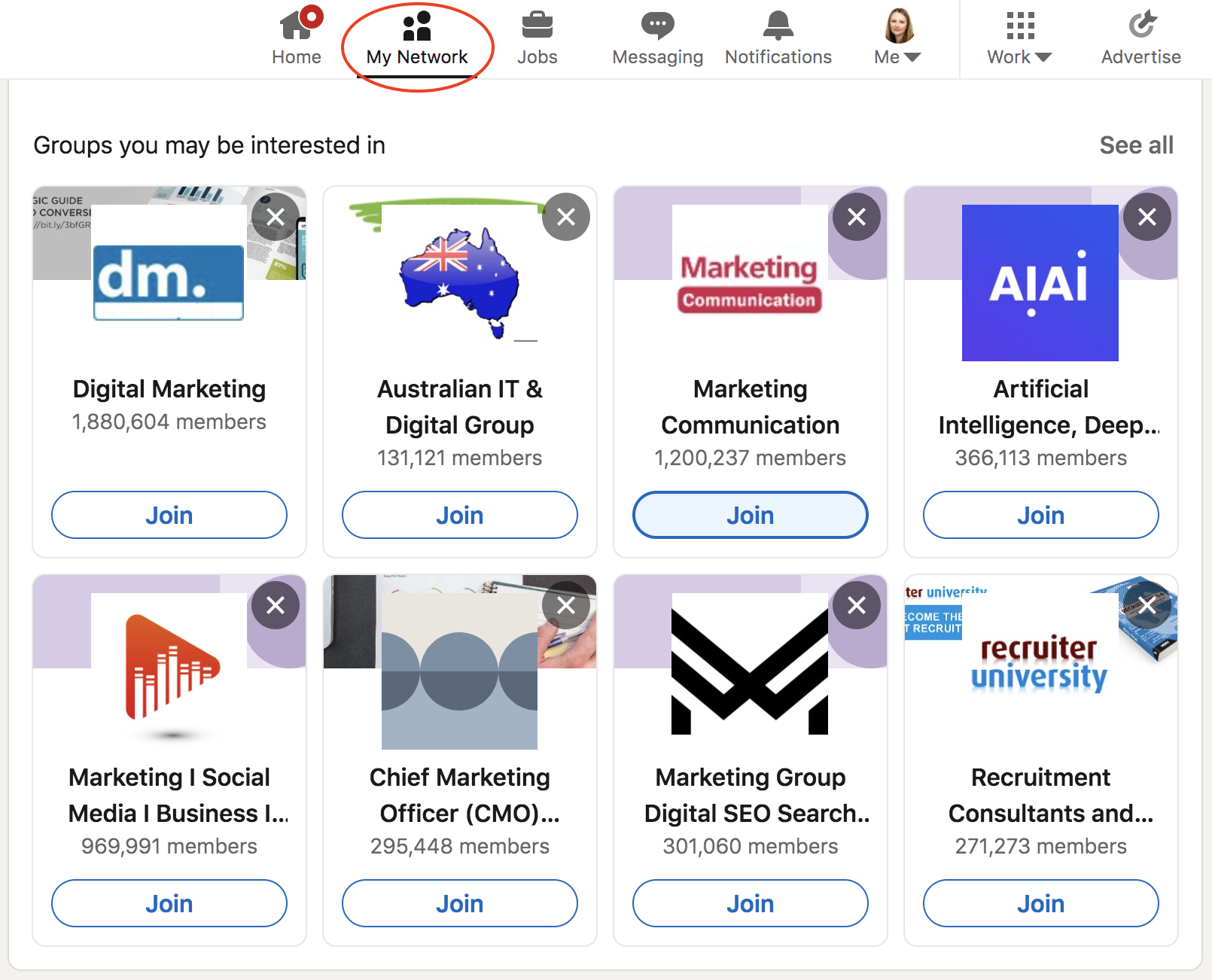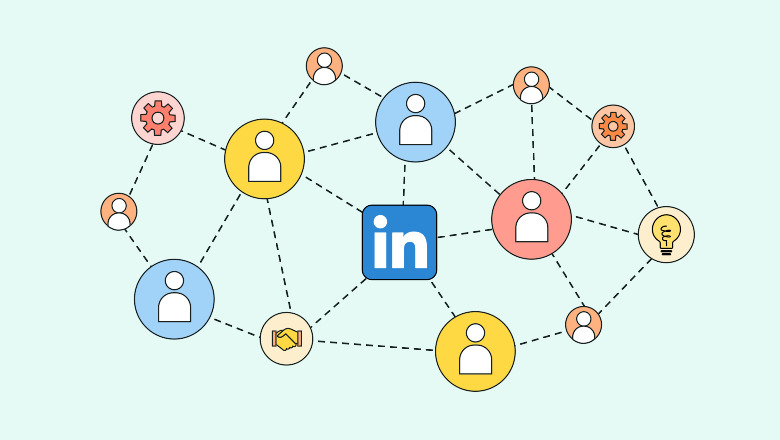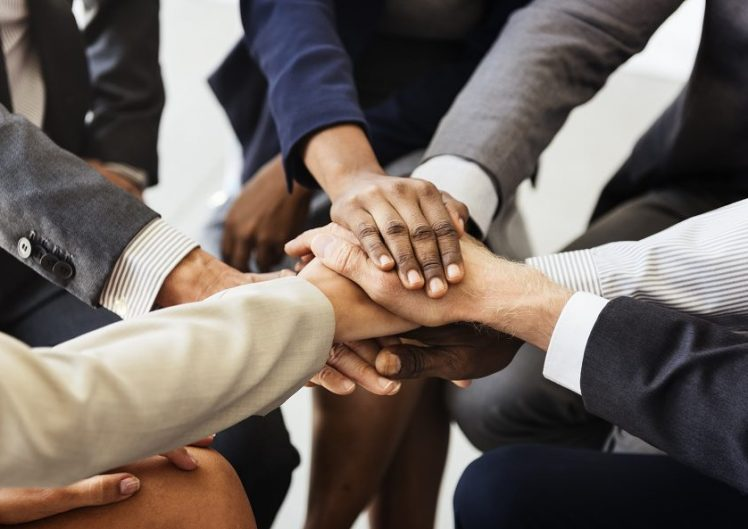LinkedIn has become the go-to platform for professionals looking to connect, network, and expand their career opportunities. One of the most powerful features of LinkedIn is the use of groups, which allow like-minded individuals to come together, share knowledge, and form valuable connections.
In this article, we will explore how to effectively leverage LinkedIn groups for content marketing and networking purposes and provide strategies for building and nurturing relationships within these groups.
Understanding the Power of LinkedIn Groups

LinkedIn groups play a crucial role in professional networking by providing a platform where professionals can connect with others in their industry or with similar interests. These groups serve as virtual communities where members can exchange ideas, ask questions, and find relevant groups to showcase their expertise.
The Role of LinkedIn Groups in Professional Networking

In today’s competitive job market, networking is key to success. LinkedIn groups offer professionals a unique opportunity to connect with others who share similar professional goals or interests, regardless of geographical constraints. According to a study by LinkedIn, professionals who actively engage in groups on linkedin are 80% more likely to be viewed as influential in their industry.
When professionals join LinkedIn groups, they gain access to a vast network of individuals who can provide valuable insights, advice, and potential job opportunities. These groups create a sense of community and foster connections that can lead to career advancements, collaborations, and mentorship opportunities. By actively participating in group discussions, professionals can establish themselves as thought leaders and expand their professional network.
LinkedIn groups also serve as a platform for professionals to stay updated on industry trends, news, and events. Group members often share relevant articles, webinars, and conferences, allowing others to stay informed about the latest developments in their field. This access to industry-specific knowledge can give professionals a competitive edge and enhance their professional growth.
Key Features of LinkedIn Groups

Within these discussion forums, professionals can engage in meaningful conversations with like-minded individuals. They can seek advice on specific challenges they are facing, share their expertise on a particular topic, or simply exchange ideas with others in their field. These discussions often lead to valuable insights, new perspectives, and potential collaborations.
The member directory feature in LinkedIn groups enables professionals to explore the profiles of other group members. This feature provides valuable information about their professional background, experiences, and areas of expertise. By reviewing these profiles, professionals can identify individuals who align with their interests or who possess the knowledge they seek. This makes it easier to reach out and establish connections that can lead to mutually beneficial relationships.
LinkedIn groups keep members engaged by sending notifications about new activities within the group. These notifications serve as reminders to check the group and participate in ongoing discussions. By staying informed and engaged in multiple groups, professionals can maximize the benefits of being part of a LinkedIn group and seize opportunities for networking and professional growth.
One of the significant advantages of LinkedIn groups is the access they provide to influential thought leaders and industry experts. These individuals often participate in group discussions, sharing their expertise and insights. By actively engaging in these conversations, professionals can learn from the best in their field, gain valuable knowledge, and establish connections with key decision-makers. These connections can open doors to new opportunities, mentorship, and collaborations that can accelerate professional growth.
- Discussion Forums: LinkedIn groups provide discussion forums where members can start or participate in conversations related to a specific topic or industry. These forums serve as a valuable platform for sharing ideas, seeking advice, and building connections.
- Member Directory: Groups allow members to view the profile information of other group members, making it easier to identify potential contacts and establish meaningful connections.
- Notifications: Members receive notifications about group activity, such as new discussions or comments, ensuring that they stay informed and engaged.
- Access to Influencers: Many LinkedIn groups attract influential thought leaders and industry experts. By actively participating in group discussions, members can gain valuable insights from these influencers and establish connections with key decision-makers.
Strategies for Effectively Using LinkedIn Groups

While joining LinkedIn groups is easy, effectively utilizing them for networking purposes requires a strategic approach. Here are some key strategies to maximize the benefits of LinkedIn groups:
Choosing the Right LinkedIn Groups
Not all LinkedIn groups are created equal. To make the most of your networking efforts, select groups that align with your professional goals and interests. Consider factors such as group size, industry relevance, and member engagement levels when making your decision to join groups.
When choosing LinkedIn groups, it’s essential to find ones that are active and vibrant. Look for groups where active members frequently post and engage in discussions. These groups provide a fertile ground for networking opportunities and knowledge sharing.
Furthermore, consider the diversity of the group members. A diverse and new group members can expose you to different perspectives and expand your professional network. By joining groups with members from various industries and backgrounds, you will find groups that can tap into a wealth of knowledge and gain valuable insights.
Engaging in Group Discussions
Actively participating in group discussions is a powerful way to showcase your expertise and build relationships. Rather than simply promoting yourself, focus on adding value to the conversation by sharing valuable insights, answering questions, and providing helpful resources.
When engaging in group discussions, take the time to read through the existing comments and understand the context before jumping in. This shows that you respect the ongoing conversation and are genuinely interested in contributing meaningfully.
Additionally, don’t be afraid to ask thoughtful questions that spark further discussion and create group together. By initiating conversations, you can position yourself as a thought leader and attract the attention of other group members.
Remember, effective networking is not just about self-promotion. It’s about building relationships and establishing yourself as a valuable resource within the community.
Promoting Your Expertise in a Non-Spammy Way
While it’s important to promote your expertise, it’s equally important to do so in a non-spammy manner. Instead of bombarding group members and target audience with self-promotional content, aim to establish credibility by sharing useful information and engaging in meaningful conversations.
One effective way to promote your expertise is by sharing relevant articles, blog posts, or industry reports. When sharing content, provide a brief summary or your own insights to spark interest and encourage discussion.
Furthermore, actively seek out opportunities to help other group members. If someone asks a question related to your area of expertise, offer your assistance and provide valuable advice. This not only showcases your knowledge but also demonstrates your willingness to contribute to the community.
Remember, building a strong professional network takes time and effort. Consistency is key, so make sure to regularly engage in group discussions, share valuable insights, and establish yourself as a trusted and respected member of the LinkedIn community.
Building and Nurturing Relationships within LinkedIn Groups

Building and nurturing meaningful relationships within LinkedIn groups requires a proactive approach. Here are some effective strategies to foster meaningful connections:
Initiating Conversations with Group Members
Don’t wait for others to join a linkedin group to reach out to you; take the initiative to connect with group members. Start conversations by asking thoughtful questions, offering assistance, or expressing your appreciation for their contributions. These initial interactions can pave the way for long-lasting connections.
For example, imagine you’re a member of a LinkedIn group for marketing professionals. You come across a post where someone is seeking advice on social media marketing strategy and advertising. Instead of simply liking the post or leaving a generic comment, you take the time to craft a detailed response, offering specific strategies and sharing your own success stories. This not only showcases your expertise but also demonstrates your willingness to help others.
Furthermore, when initiating conversations, it’s essential to be genuine and authentic. Show a sincere interest in the other person’s work and experiences. By demonstrating your curiosity and actively listening to their responses, you can establish a strong foundation for a meaningful relationship.
Providing Value to the Group
To establish yourself as a valuable member of the group, focus on contributing meaningful content to relevant groups. Share articles, resources, or industry insights that will benefit other members. By consistently providing value to suggested groups, you’ll be seen as an authoritative and trustworthy professional.
Let’s say you come across a fascinating article about the latest trends in digital marketing. Instead of simply sharing the link, take the time to write a brief summary of the key points and your own analysis. This not only saves time for busy group admins and members but also showcases your expertise and thought leadership.
In addition to sharing content, actively engage with other members’ posts. Leave thoughtful comments, ask follow-up questions, and encourage discussions. By actively participating in the group page conversations, you’ll not only build your personal brand but also create a sense of community within the group.
Following Up with Connections Outside the Group
LinkedIn groups serve as an excellent starting point for networking, but the real magic happens when you take the conversation beyond the group. Once you’ve established a connection, reach out to them privately, invite them for a virtual coffee chat, or explore ways to collaborate on projects. These one-on-one interactions enable you to deepen the relationship and explore potential opportunities.
Imagine you’ve connected with a fellow group member who works in a complementary field. You’ve exchanged a few messages within the group, discussing industry trends and sharing insights. Now, it’s time to take the conversation to the next level. You send them a personalized message, expressing your interest in their work and suggesting a virtual coffee chat to further discuss potential collaborations.
During the coffee chat, you not only discuss professional opportunities but also take the time to get to know each other on a personal level. By showing genuine interest in their background, hobbies, and aspirations, you can build a stronger bond and establish a mutually beneficial relationship.
Remember, building and nurturing relationships within LinkedIn groups is an ongoing process. It requires consistent effort, active engagement, and a genuine desire to connect with others. By following these strategies, you’ll be well on your way to expanding your professional network and unlocking new opportunities.
Measuring the Success of Your LinkedIn Group Networking Efforts

As with any networking or marketing strategy, it’s essential to measure your progress to ensure that you’re on the right track. Here are some key metrics to track:
When it comes to measuring the success of your LinkedIn group networking efforts, there are several important factors to consider. By keeping a close eye on these metrics, you can gain valuable insights into the effectiveness of your new group networking and social media strategy, and make necessary adjustments to achieve your goals.
Tracking Connection Growth
One of the primary goals of networking on LinkedIn is to expand your professional network. By monitoring the number of connections you’ve made through LinkedIn groups, you can gauge the growth of your network over time. It’s not just about the quantity of connections, but also the quality. Keep track of how these connections have expanded your professional network and led to opportunities for collaboration or career advancement.
For example, you may notice that certain groups have a higher concentration of professionals in your industry or field of interest. By actively engaging with these groups and making connections with like-minded individuals, you can tap into a valuable network of resources and potential collaborators.
Assessing Engagement Levels
Engagement is a key indicator of the effectiveness of your LinkedIn group networking efforts. Take note of the level of engagement you receive from group discussions. Measure the number of interactions, such as likes, comments, or shares, on your posts. This indicates how well your contributions resonate with fellow group members.
Engagement can also be measured by the number of profile views, messages, or connection requests you receive as a result of your active participation in LinkedIn groups. These metrics can provide valuable insights into the level of interest and engagement generated by your networking efforts.
Evaluating the Quality of Connections Made
Not all connections are created equal. While it’s important to expand your social network further, it’s equally important to evaluate the quality of the relationships you’ve built through LinkedIn groups. Assess the level of interaction, relevance to your industry or professional goals, and the potential for mutually beneficial collaborations.
For instance, you may find that certain connections have led to valuable partnerships, job opportunities, or mentorship relationships. By evaluating the quality of your connections, you can focus your networking efforts on building relationships that have the potential to create meaningful impact in your professional journey.
In conclusion, leveraging LinkedIn groups for networking is a valuable strategy for expanding your professional reach and fostering meaningful connections. By understanding the power of LinkedIn groups, adopting effective strategies, and measuring your success, you can unlock the full potential of this powerful networking platform.
Remember, networking is an ongoing process, and success may not happen overnight. It requires consistent effort, active participation, and a genuine interest in building relationships. By regularly monitoring and evaluating the metrics mentioned above, you can continuously refine your networking strategy and maximize the benefits of LinkedIn groups.
